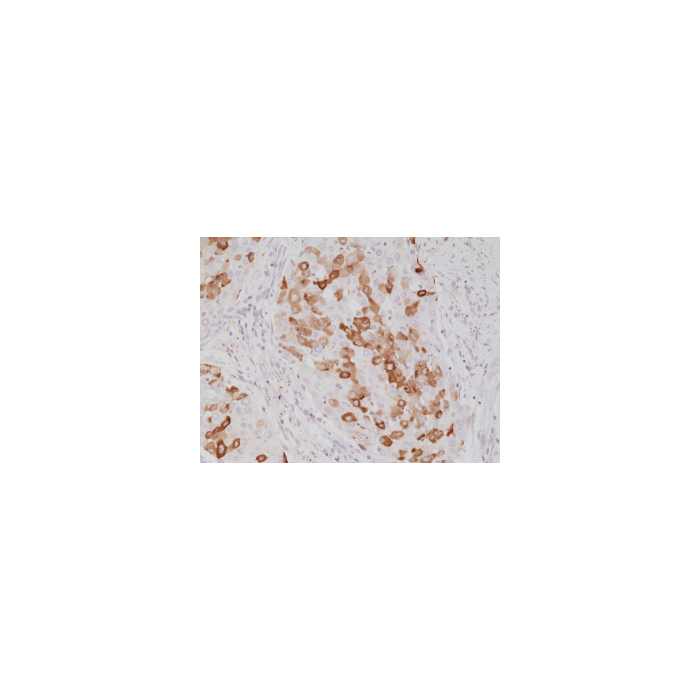Cookie Policy: This site uses cookies to improve your experience. You can find out more about our use of cookies in our Privacy Policy. By continuing to browse this site you agree to our use of cookies.
RevMab
anti-Surfactant protein A (human), Rabbit Monoclonal (RM334)

| Product Details | |
|---|---|
| Synonyms | SP-A; PSPA; Alveolar Proteinosis Protein |
| Product Type | Recombinant Antibody |
| Properties | |
| Clone | RM334 |
| Isotype | Rabbit IgG |
| Source/Host | Rabbit |
| Immunogen/Antigen | A peptide corresponding to the C-terminus of human Surfactant protein A (SP-A). |
| Application |
Immunohistochemistry (IHC): 1:500-1:1000 dilution |
| Crossreactivity | Human |
| Specificity |
This antibody reacts to human Surfactant protein A (SP-A). |
| Purity | Protein A purified. |
| Purity Detail | Protein A affinity purified from an animal origin-free culture supernatant. |
| Concentration | N/A |
| Formulation | Liquid. 50% Glycerol/PBS with 1% BSA and 0.09% sodium azide. |
| Isotype Negative Control | |
| Other Product Data |
Click here for Original Manufacturer Product Datasheet |
| Accession Number | Q8IWL1 |
| Declaration | Manufactured by RevMab Biosciences. |
| Shipping and Handling | |
| Shipping | BLUE ICE |
| Long Term Storage | -20°C |
| Handling Advice | Avoid freeze/thaw cycles. |
| Use/Stability | Stable for at least 1 year after receipt when stored at -20°C. |
| Documents | |
| Product Specification Sheet | |
| Datasheet |
 Download PDF Download PDF |
Surfactant protein A (SP-A) is an abundant, phospholipid-associated protein in pulmonary surfactant. SP-A is expressed primarily by type II and bronchiolar cells in the respiratory epithelium. In the alveolus, SP-A forms large oligomers and is closely associated with tubular myelin, the major extracellular form of surfactant. SP-A contains a 10-kDa collagen-like amino-terminal domain and a globular carboxyl-terminal domain with structural homology to SP-D, mannose binding protein, Clq, and other members of the collectin family of mammalian lectins. Together with SP-D, SP-A plays an important role in pulmonary innate immunity by recognizing canonical patterns on microbial surfaces. These host defense proteins protect the lung from infection by recognizing the carbohydrate and/or lipid component on pathogens, including bacteria, virus and fungi, and by helping to initiate various clearance mechanisms. It was shown that SP-A activates alveolar macrophage metabolism, and enhances the uptake of bacterial pathogens by both macrophages and monocytes. In addition, SP-A has been shown to serve as a hormone in parturition through its ability to modulate proinflammatory cytokine production, as well as in several other functions which include enhancing phospholipid uptake, inhibiting surfactant secretion by isolated type II epithelial cells, contributing to tubular myelin formation, enhancing surfactant spreading, stabilizing phospholipid mixtures and conferring resistance to protein mediated inactivation of surfactant. SP-A polymorphisms play a role in respiratory distress syndrome, allergic bronchopulmonary aspergillosis and idiopathic pulmonary fibrosis. The levels of SP-A are decreased in the lungs of patients with cystic fibrosis, respiratory distress syndrome and further chronic lung diseases. The interaction of SP-A with type II cells is a receptor-mediated process.





